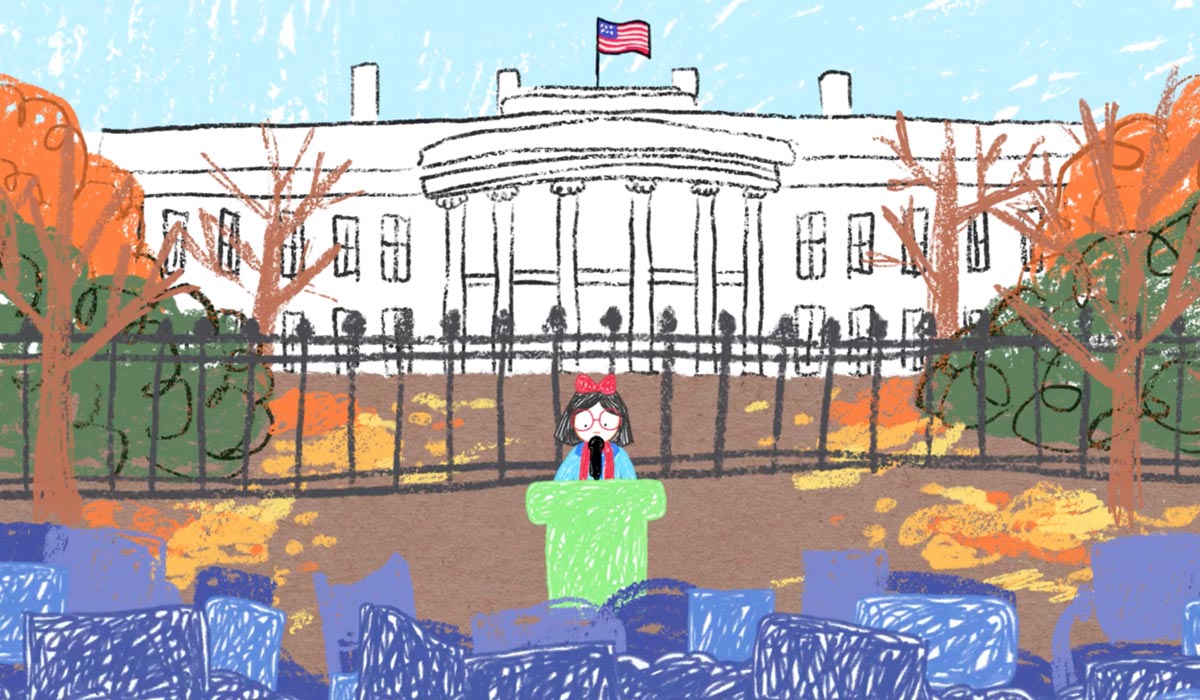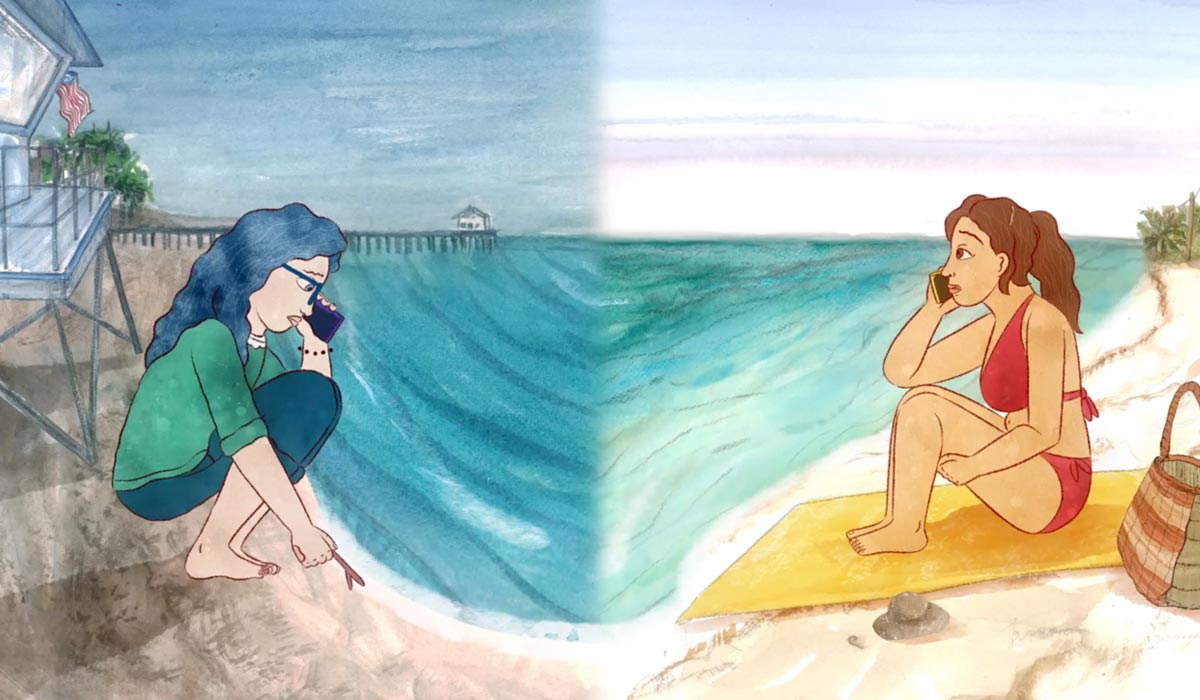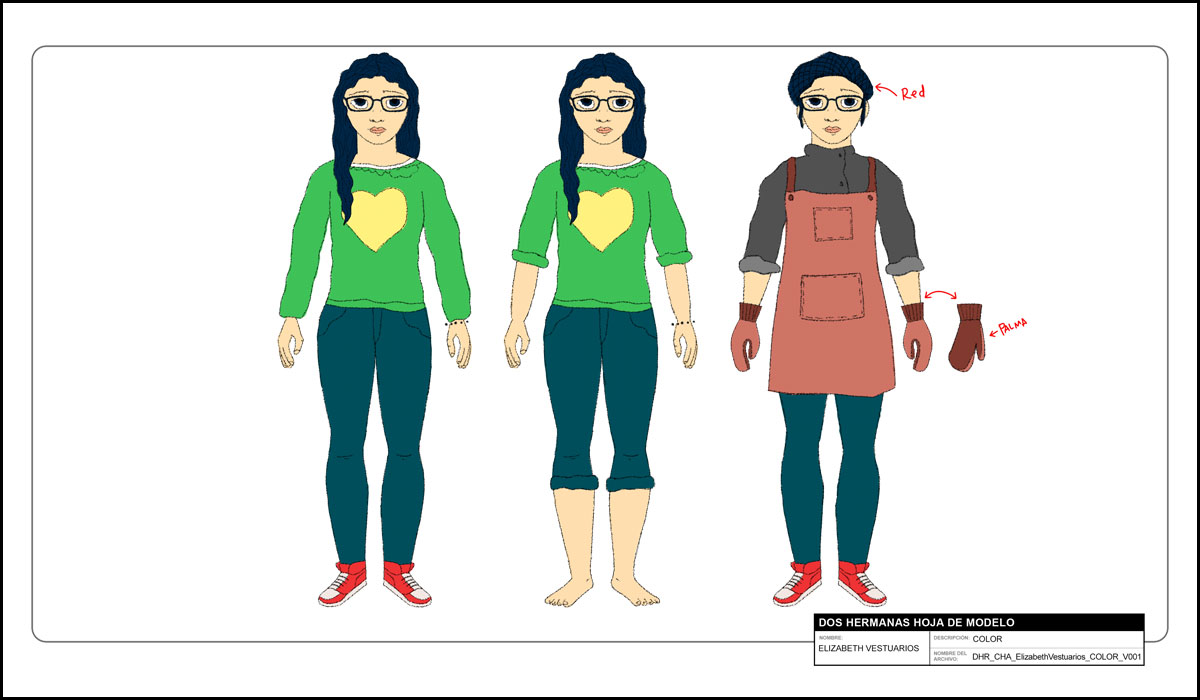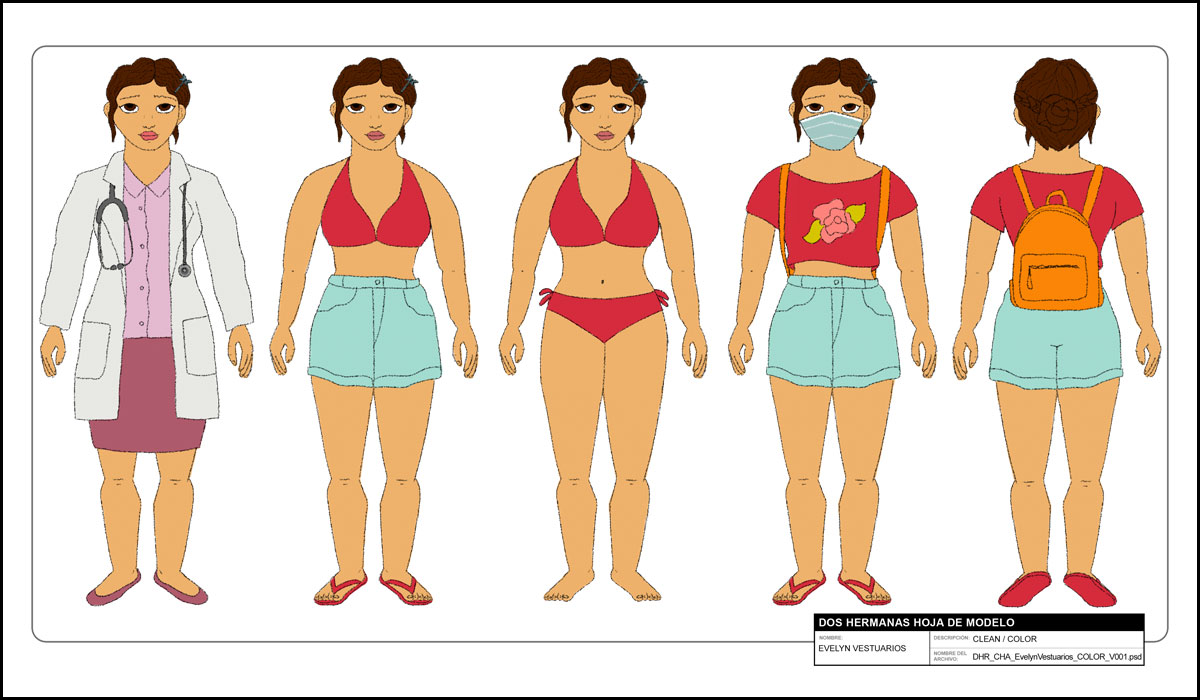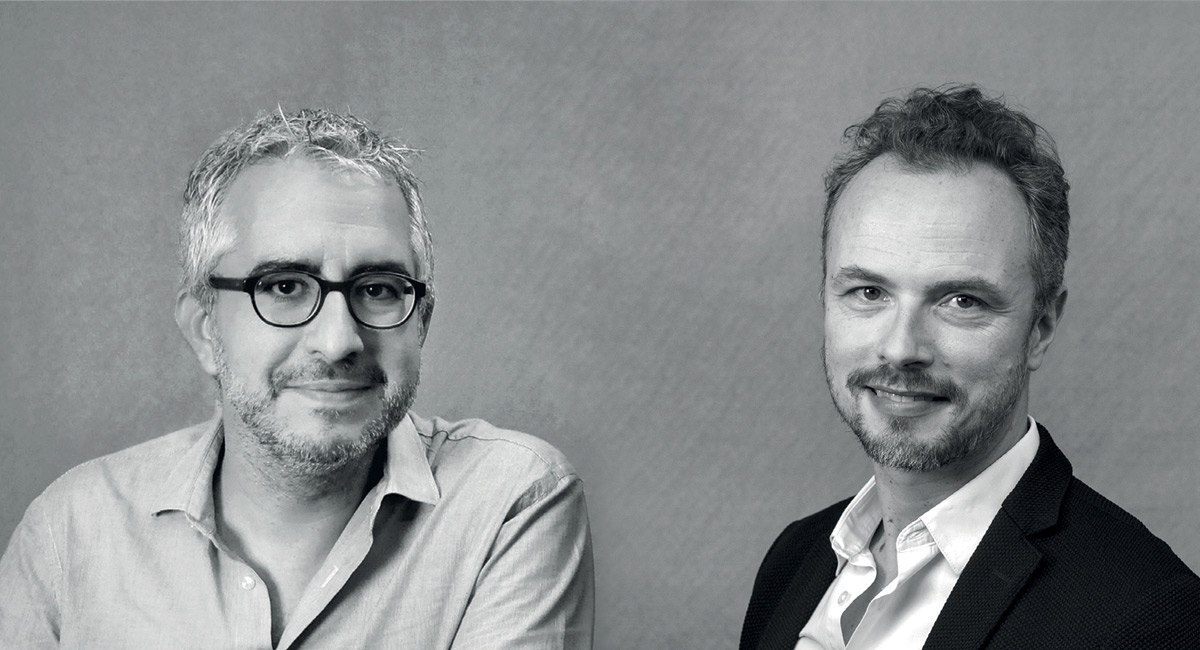Synopsis
Accessing the “American Dream” is still not possible for everyone, even less so for those from immigrant backgrounds: for undocumented youths, their hopes for the future coexist with permanent fear of possible deportation. This is a window inside the hearts and minds of these young dreamers, and the undocumented.
Film Credit
Directors: Carlos Hagerman and Jorge Villalobos
Producer: Carlos Hagerman
Artistic directior: Marec Fritzinger
Music: Javier Alvarez
Target audience: Teens, Young adults, Adults, Family
Technique: 2D digital
Running time: 87 minutes
Home is Somewhere Else is a feature-length animated documentary that portrays three true personal stories of young immigrants in the USA who have faced complexities and challenges in having a fundamental quality of life. The film was nominated for the Feature Films Contrechamp in Competition at Annecy Festival 2022.
With the power of animation as a visual storytelling medium, the film naturally guides us to three different story universes, and the protagonist of each story shows us a different aspect of immigration issues. It brings awareness to a big international issue that humanity as a whole should be aware of and seek solutions to: immigrant youths who have been in painful and difficult social situations, not because of them but because of the parents who decided to immigrate for a variety of reasons.
We heard the story behind the creation of the film from Carlos Hagerman and Jorge Villalobos, the directors of the film.
Interview with Carlos Hagerman and Jorge Villalobos
Animationweek (AW): How did you start this film project and what was your main objective in developing this film?
Carlos Hagerman: Our animation studio, Brinca, was created 10 years ago with the idea of using animation to talk about social issues. I come from making documentaries and Jorge comes from making animation, so it was very natural for us to decide to make an animated documentary. We knew that through animation, we could tell these stories and reach younger audiences to try to change the narrative about undocumented families and generate empathy towards them.
Jorge Villalobos: Five years ago, I was living in Miami, and I was very close to the stories of undocumented families. I saw a documentary called “Hate rising” where young kids talked about their fear of having their fathers being deported, and I knew I had to do something about it.
I had the chance to meet Jasmine’s family and talk with them. The day I made the first interview to 11-year-old Jasmine, she did some drawings of her family and her house, which we used to produce a 2-minute animation with her voice and her drawings. That was the first seed of this project.
AW: What kinds of things are you hoping the audience will bring back from this film?
Jorge Villalobos: We know that the part of the audience that are living in similar situations than the ones shown in the film will feel identified and fully understand these topics and emotions. But for us is also very important that people that are not aware of these issues and watch the film will have more empathy for someone who is going through these kind of situations.
Carlos Hagerman: We decided since the beginning that we didn’t want to make a film full of data and statistics, neither with a complex social and political context, or with interviews with experts talking about things they haven’t lived through in their own flesh. We wanted to make an emotional experience so that people who watch the film can get a glimpse of their daily lives.
AW: What did you take care in the most and what kinds of difficulties did you face when you took on the research and interviews to develop the story of the film?
Carlos Hagerman: The most important thing was to develop a relation of confidence with our protagonists and make them trust in us. I have known Evelyn and Elizabeth, the protagonists of our film’s second story, for more than 10 years because they appeared in my documentary “Those who remain”, so it was very easy to continue the conversation of their stories. Since the beginning they accept talking with us and most parts of this storyare made with phone conversations with the two sisters.
Jorge Villalobos: On the other hand, Jasmine was 11 years old when we met her, so we first had to develop a relation of trust, not just with her but with her parents. Luckily, they were very generous and opened the doors of their house and of their lives. Maybe the most difficult part of the interviews process was that because of COVID-19 pandemic we couldn´t see them personally and most of the interviews were made by phone or Zoom. We bought professional audio recorders which we sent to their homes. Then we hired a sound recordist to teach our protagonists how to use the equipment so they could record themselves. It was very challenging, but it worked very well.
AW: How did you decide on the three stories from all the people and their stories you came across through all of your research for this film project, and why?
Jorge Villalobos: As I said, Jasmine was the first protagonist we met. After we produced a 2-minute animation with her drawings and her voice, we knew that this concept could grow and turn into a feature film. Jasmine was a very powerful story because it had the mixture of the innocence and courage of a girl who is giving a speech in front of the white house, fighting for the rights of her parents while she is still a little girl. She was very articulated in telling her story, but later we discovered her parents too, so they ended also appearing in the film. A few months later Carlos saw Evelyn in LA and after speaking with her, he realized that the relation between her and Elizabeth, her sister, was a powerful second story.
Carlos Hagerman: We already had a family of El Salvador to be the third story, but because of COVID-19 pandemic we lost communication. A few months later, I was in a documentary festival, and I met Jose Eduardo Aguilar, who is also a film maker. His personality and storytelling captivated me, and I invited him to be part of the film. His point of view of what he has lived was unique since he is a poet and an artist. His story is also very powerful and dramatic, and later we decided that he had to be also the master of ceremonies of the film, so he wrote some poems to introduce the film, each one of the stories and finally, conclude the film. That gave the film a sense of unity that was lacking.
AW: What do you think are the strengths of using animation to deliver these three stories to the audience, rather than using live-action?
Carlos Hagerman: Animation was used in the first place to protect the identity of our protagonists. But we also knew that animation was a great tool to recreate moments that otherwise would be impossible to see; to create visual metaphors and poetic allegories and to get into the subjectivity of our protagonists. Moments like Evelyn combing their parents from her hair, Jasmine seeing her parents fly and get lost in the sky, or Lalo riding a broken bike followed by dozens of fish, could only be done with animation.
Jorge Villalobos: Also, we knew that animation was a very effective way to reach youth audiences which is one of our main goals. We want young people to see these stories and probably to change the narrative they have about undocumented immigrants. There are hundreds of documentaries about this subject, so we think that telling these same stories from another perspective, and making it visually attractive, will help us get more people to watch the film.
AW: What was your main goal in changing the visual style of the animation for each of the three stories? And what did you take care in the most when deciding each story’s visual style?
Jorge Villalobos: We wanted to reflect visually the personality of each of our protagonists. With Jasmine the process was very natural since the design is based in her own drawings which introduces us very quickly into the world of a young girl. Marec Fritzinger, the art director of the film, helped translate the visual world of Jasmine into something that would work for the animation team.
Carlos Hagerman: For the second story, I had the luck of discovering Aura Lagunes Moreno’s work. She is specialized in woman’s portraits, so when I saw her work, it immediately resonated with me with the kind of story and emotional depth that this story has. Aura also developed many of the backgrounds in this story which gives a very artisanal feeling. And the third story was developed by artist Alonso Ross since we wanted to have a style that was related more to graphic novel, with a more defined brush stroke and solid colors.
AW: Could you please let us know about the story behind the music composition for the film?
Carlos Hagerman: The music was composed by Javier Álvarez who is one of the most important composers in México and with whom we had worked with before in several projects. He had the ability to give each story it´s own personality but at the same time to make a score that unites all three stories in the same emotional and conceptual idea. He worked with the animatics we gave him to make digital versions of the music and later, when the animation was finished, he recorded real instruments in his studio in Mérida. We are very lucky to have collaborated with him.



